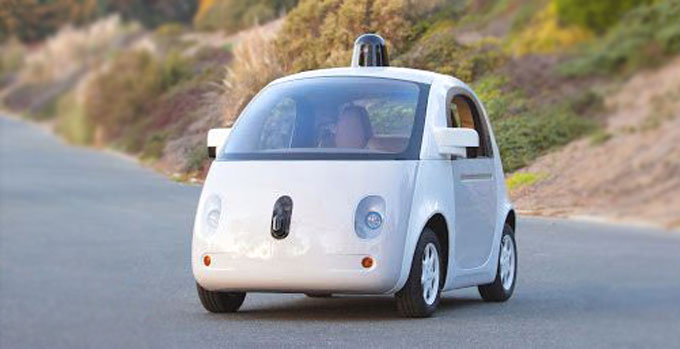Google has unveiled the latest prototype of its fully autonomous car with a makeover giving the front section the look of a koala bear.

The friendly-looking styling is apt as driverless technology promises ‘crash-proof’ motoring. The cars have already racked up thousands of miles on California’s roads. Early versions use the Toyota Prius as a mule, but the latest model is new from the ground up.
The car is currently being tested on the Google test track before it takes to the streets of Northern California next year.
Read more google.com/+GoogleSelfDrivingCars
The advent of autonomous cars has the potential to reduce congestion, emissions, fuel costs and, most importantly, road deaths – the World Health Organisation estimates that over one million people are killed each year on the roads. The idea of using driverless ‘crash-proof’ cars to address these problems might seem fanciful, but the most significant barrier to their successful introduction is likely to be cultural rather than technological.
The lightning speed of recent technical developments has enabled prototypes, including the Google car, to cover hundreds of thousands of kilometres in ‘driverless’ mode – advances that not only promise safer roads, but force us to redefine our relationship with the automobile.
According to the founder of Swiss automotive design company Rinspeed, Frank Rinderknech,: “Until now, what we have primarily associated with auto mobility was freedom and individuality. And – consciously or unconsciously – we are prepared to pay a high price in many regards for these privileges. We need only look at the accident statistics.”
There is a sense of inevitability about a change to autonomous driving, but any such change is likely to be gradual. Britain’s most popular car, the Ford Focus, is now offered with a self-parking feature – an optional extra that takes control of the steering to execute a perfect parallel park – but taking an entirely passive role for the entirety of a journey represents a seismic change in our relationship with our cars.
Road traffic collisions are the number one cause of death globally among those aged 15-29 years – in the time it has taken you to read this article, four people have been killed on the roads. If autonomous car technology can bring an end to this carnage, it cannot come soon enough.
ETA breakdown cover
Established 24 years ago, and with over 5,000 recovery trucks on call 24/7, the ETA has a proven track record of providing efficient, reliable breakdown cover. We handpick only the best local mechanics and garages around Britain to send out if you break down. We believe this way of working is efficient, environmentally friendly and helps support local communities and economies, too.
0 Comments View now